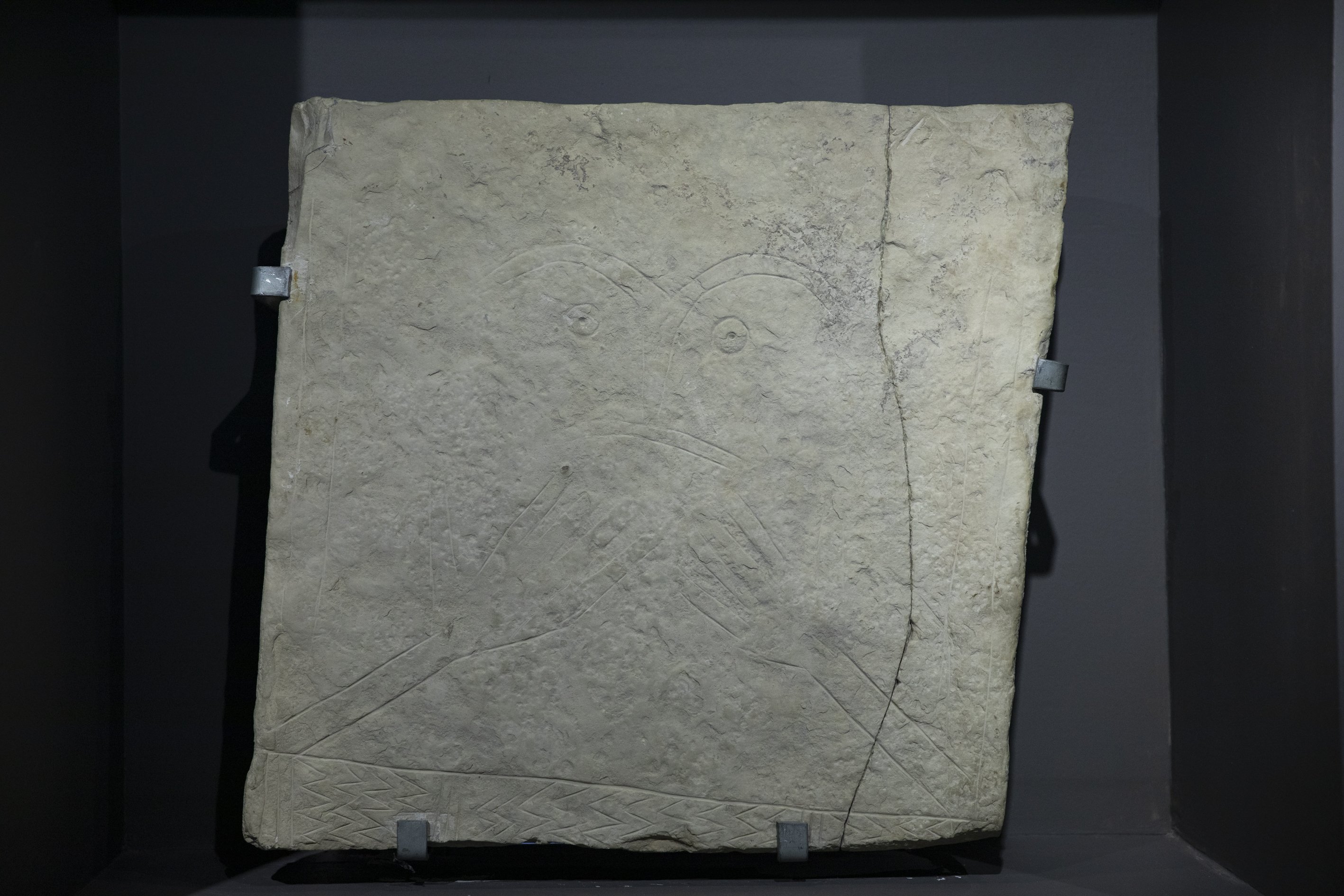© Turkuvaz Haberleşme ve Yayıncılık 2025
Historical artifacts dating back to the Bronze Age and adorned with depictions of "protective eyes" are now on display for history enthusiasts at the Izmir Archaeology Museum on Turkey's Aegean coast.
The museum hosts different historical artifacts every month through the project "You Will See What You Can't See." The project offers details about 5,000-year-old historical artifacts decorated with eyes and the belief that they protect cities and people against the enemy or evil eyes. The items will be on display in the Treasury Chamber of the museum throughout the month of February.

The seven artifacts on display at the museum were unearthed during the archaeological excavations at the Höyücek mound in the Menemen district, the Limantepe mound in the Urla district and the Bakla Tepe mound in the district of Menderes. Among the interesting works in the exhibition is a limestone block depicting a human face. This artifact was found in the 1990s during the construction of a canal of the Directorate General for State Hydraulic Works (DSI) at the foot of the Höyücek mound. It is estimated that the early Bronze Age block, featuring a figure with his hands reaching toward the sky, was placed at the entrance of the city to protect the city and its people from attacks, epidemics, earthquakes and fires.
Another work decorated with eyes in the exhibition is an item of pottery found in the Limantepe mound in 2012. Featuring a depiction of a human face, this artifact is believed to have been used for the storage of sacred wheat. Moreover, a small human-shaped vessel found in the Bakla Tepe excavations and 1-centimeter-long pendants believed to have been worn by the Bronze Age residents as protection against evil and evil eyes are also waiting for visitors in the museum.
Speaking to Anadolu Agency (AA), Izmir Archeology Museum Director Hünkar Keser said that they are presenting very rare, new artifacts to visitors every month through the project, which started in 2021. According to Keser, they are continuing their work in 2022 for the project with the theme of "cults."
Explaining that they put 8,000-year-old artifacts from the Neolithic Age on display in the museum for the first time in January as part of the project, Keser said that they selected artifacts from the Bronze Age dating back approximately 5,000 years for February's exhibition.
"The people living in the third millennium B.C. began to form large communities. Their enemies were now the people of other cities and kingdoms rather than nature. Therefore, they had to protect their own kingdoms, houses, warehouses and gardens. They not only used their military power but also asked for help from divine powers to protect themselves. This is why they depict people praying in their works or added eyes on the artwork that were thought to protect against evil," Keser outlined.
Noting that a block, featuring eyes on it, was placed on the fortification walls of the castle, the director added: "This piece can be interpreted as a 'figure praying to God' or a 'praying person' because of his hands reaching toward the sky. The emphasis of the eyes gives the enemy the message of 'stay away from here.' It is a spiritual aspect of keeping the enemy away. In the Bronze Age, those who wanted to be protected from theft and plunder created and emphasized the figures of eyes on plates, pots and necklaces. Therefore, we see that the use of the evil eye bead, that is, the eye figure, which we commonly use today, dates back 5,000 years ago."
Keser said that the eye figure is not only used on the city walls. "One-centimeter-long portable figures that function as pendants may also have been used as 'objects that protect people,'" he added.
